
General
|
November 17, 2025
|
15 Essential Tools for Effective Procurement Standard Operating Procedures
Key Highlights:
- SowFlow enables quick creation of procurement SOPs, enhancing efficiency and compliance while reducing errors.
- 57% of purchasing professionals report improved decision-making from advanced documentation tools.
- 74% of supply chain leaders are increasing investments in technology, with the purchasing software market projected to reach $9.5 billion by 2028.
- Bill.com automates invoice processing and approval workflows, leading to significant efficiency gains and a potential ROI of 200-300% in the first year.
- Kissflow automates procurement processes, reducing processing times by up to 50% and increasing contract compliance by 35%.
- NetSuite offers an integrated ERP solution that can reduce purchasing costs by up to 30% through automation and better visibility.
- Tipalti automates accounts payable tasks, saving over 70% of time and improving payment cycles and accuracy.
- VendorCentric emphasises the importance of clear procurement policies for operational efficiency and compliance.
- USDA guidelines ensure transparency and fairness in public procurement, crucial for managing taxpayer funds.
- Waybook centralises procurement documentation, leading to reduced paper usage by 51% and improved compliance.
- Competitive bidding enhances procurement outcomes through transparency and structured evaluation criteria.
- Effective supplier performance monitoring relies on key metrics like defect rates and on-time delivery to ensure quality.
- Spend analysis helps organisations identify cost savings and improve purchasing strategies, with potential savings of 12% from vendor consolidation.
- Clear procurement policies enhance decision-making and compliance, with 72% of leaders focusing on ESG efforts.
- Continuous improvement methods like Lean and Six Sigma help organisations adapt and enhance procurement efficiency.
Introduction
In the fast-evolving world of procurement, you might be wondering how to optimize your purchasing processes while keeping everything compliant and efficient. Well, you’re not alone! This article dives into 15 essential tools that can truly transform your standard operating procedures (SOPs) in procurement. We’ll explore how technology can streamline your workflows and enhance decision-making.
Did you know that a staggering percentage of purchasing professionals have reported better outcomes thanks to advanced documentation tools? It’s pretty impressive! So, how can businesses like yours effectively integrate these solutions? The goal is not just to keep up with industry demands but also to drive significant cost savings and achieve operational excellence. Let’s dive into this together!
SowFlow: Instant SOP Creation for Procurement Efficiency
You might be wondering how to streamline your purchasing processes, right? Well, let me introduce you to SowFlow. This intuitive platform lets organizations whip up procurement standard operating procedures (SOPs) for purchasing faster than you can say 'efficiency!' With advanced technology at your fingertips, your team can document workflows straight from their browser. This means all those important purchasing activities are neatly recorded and super easy to access.
Now, why is this important? Because this streamlined approach not only saves you precious time but also boosts compliance and cuts down on errors in procurement standard operating procedures. Industry experts agree that integrating technology into documentation is key to ramping up operational efficiency and making better decisions. In fact, did you know that 57% of purchasing professionals have seen a big boost in their decision-making skills thanks to insights from advanced documentation tools? Pretty impressive, right?
Speaking of impressive, let’s talk about the bigger picture. A whopping 74% of global supply chain leaders are ramping up their investments in supply chain technology. It’s clear that modern solutions like SowFlow are more necessary than ever. And get this: the purchasing software market is set to skyrocket to $9.5 billion by 2028! That just shows how much demand there is for effective documentation solutions.
So, if you’re looking to revolutionize your purchasing practices, SowFlow could be your go-to tool. In today’s fast-paced business world, it’s all about improving efficiency and ensuring compliance with procurement standard operating procedures. Why not give it a try and see how it can work for you?
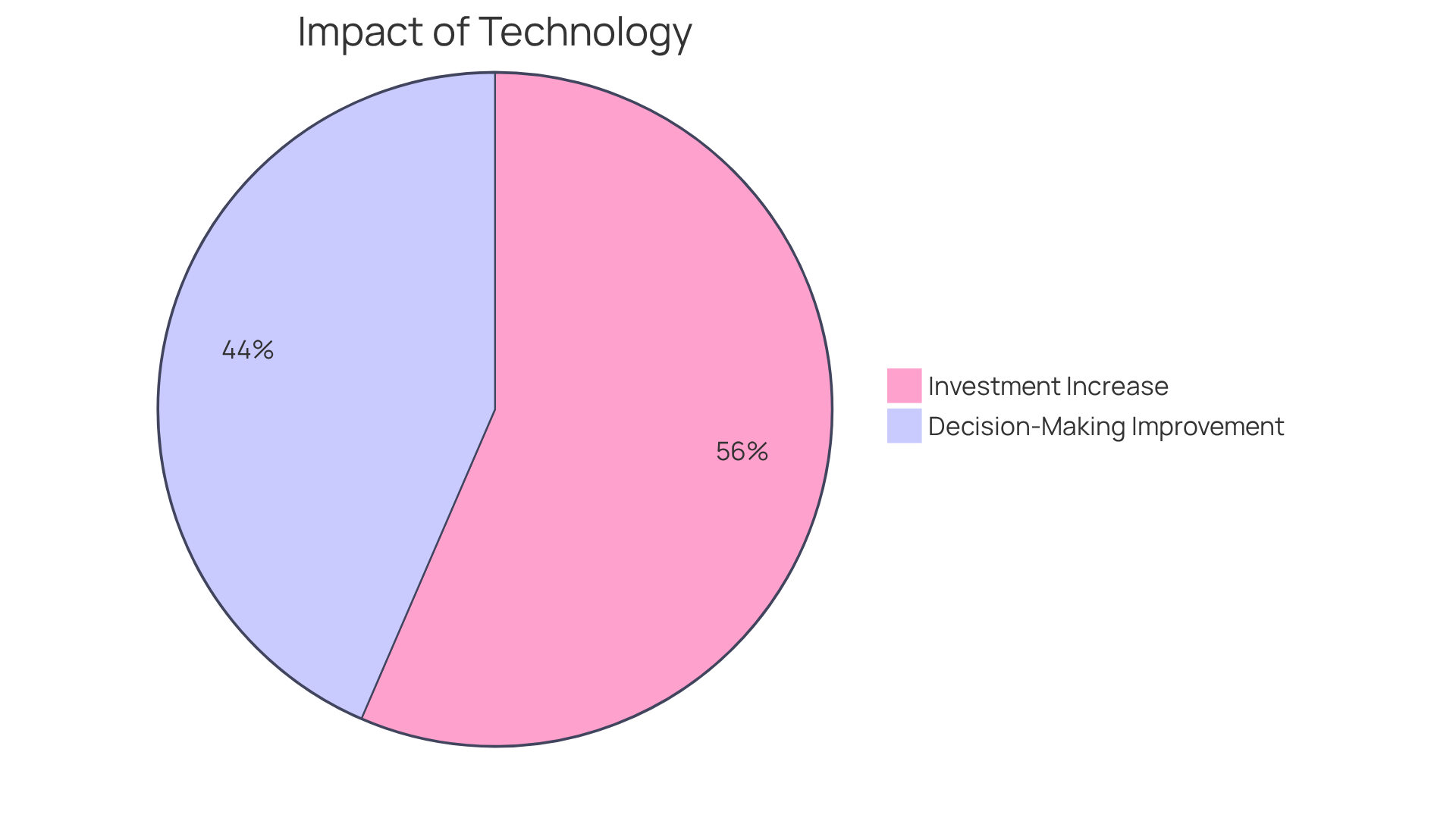
Bill.com: Streamlined Procurement and Financial Management
You might be wondering how to enhance your purchasing and financial operations. Well, Bill.com has got you covered! This platform offers a fantastic suite of features like automated invoice processing, streamlined approval workflows, and real-time spending visibility. These tools empower organizations to significantly enhance their procurement standard operating procedures.
By seamlessly integrating purchasing with financial management, Bill.com helps minimize those pesky manual errors and strengthens cash flow management. If you’re a business looking to improve purchasing efficiency while following procurement standard operating procedures and keeping a close eye on your finances, this tool is definitely worth considering.
Now, here’s something to think about: companies that implement document processing automation often see an average ROI of 200-300% within the first year! That’s a pretty compelling reason to explore Bill.com. Plus, with projections showing that 60% of back-office roles in large enterprises will be assisted by AI-driven document automation tools by 2026, Bill.com is positioning itself as a key player in driving operational excellence and financial agility.
Speaking of effectiveness, there’s a significant case study that highlights just how impactful this tool can be. A client in the hotel and gaming industry saved over 40% by automating their procurement standard operating procedures with Bill.com. That’s a real-world example of how this solution can make a difference!
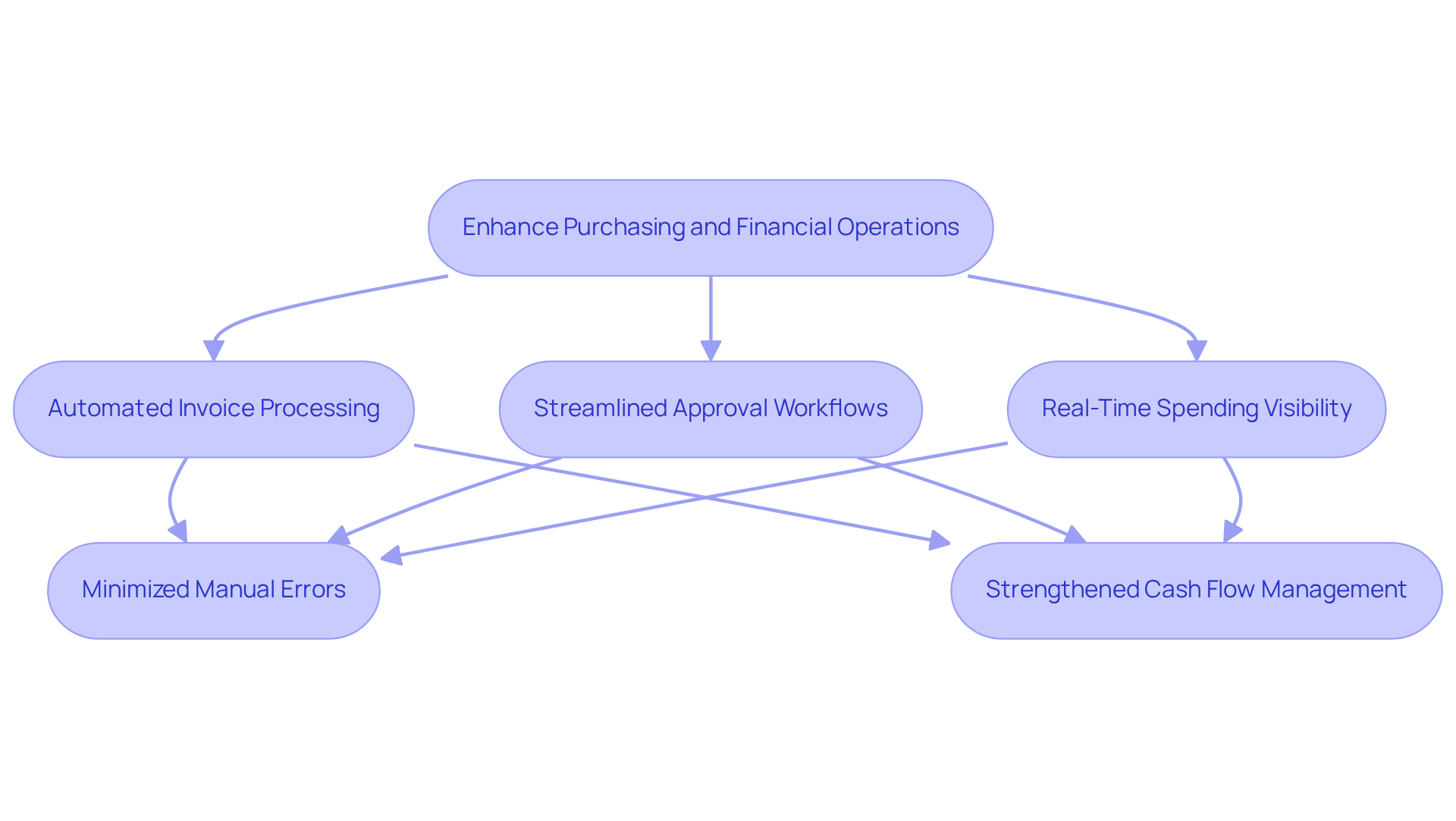
Kissflow: Automate and Optimize Your Procurement Process
You might be wondering how to make your procurement standard operating procedures smoother and more efficient. Well, let me introduce you to Kissflow! This robust automation platform is designed to help companies like yours enhance their purchasing workflows without the usual headaches. With features like automated purchase requisitions, vendor management, and contract approvals, Kissflow really streamlines the whole process.
Imagine cutting your processing times by up to 50%! That’s right-by automating those repetitive tasks, your sourcing teams can focus on strategic initiatives instead of getting bogged down with administrative work. This shift not only reduces mistakes but also boosts overall buying efficiency. So, if you’re looking to enhance your purchasing operations in accordance with procurement standard operating procedures, Kissflow could be just what you need.
Now, here’s something to think about: a report found that 55% of companies see faster decision-making as a direct perk of automated document workflows. And with the global purchasing software market projected to hit $9.5 billion by 2028, using Kissflow could lead to some serious productivity gains and improved decision-making.
Take, for example, a consumer electronics company that saw a 35% increase in contract compliance after adopting Kissflow. That’s a real-world win that showcases the platform's practical benefits! So, why not explore how Kissflow can transform your purchasing processes?

NetSuite: Comprehensive ERP Solution for Procurement Management
You might be wondering how NetSuite can help your business, right? Well, it offers a pretty comprehensive ERP solution that brings together purchasing management with key business functions like finance, inventory, and order management. This integration really boosts visibility and control over purchasing processes, ensuring compliance with procurement standard operating procedures and allowing you to make those all-important data-driven buying decisions.
Let’s talk about some key features. Automated purchase orders, supplier management, and spend analysis are just a few tools that help streamline your purchasing operations. The result? Improved efficiency and reduced costs! In fact, organizations using integrated ERP systems have reported cost reductions of up to 30% in purchasing and inventory management. That’s a big deal!
And it gets better. A whopping 62% of companies leveraging ERP solutions have seen significant cost savings thanks to automation. Plus, 96% of respondents said their ERP system was either 'very successful' or 'somewhat successful' in cutting costs. If you’ve had an ERP package for more than three years, you’re likely among the 73% of companies that report increased customer satisfaction. Talk about long-term benefits!
As businesses focus more on operational efficiency, integrating purchasing with other functions through procurement standard operating procedures and ERP systems is becoming essential. It’s a trend that’s driving better performance and smarter decision-making. Speaking of trends, did you know that 95% of companies experienced enhancement from ERPs? That really highlights the importance of having a unified purchasing strategy!
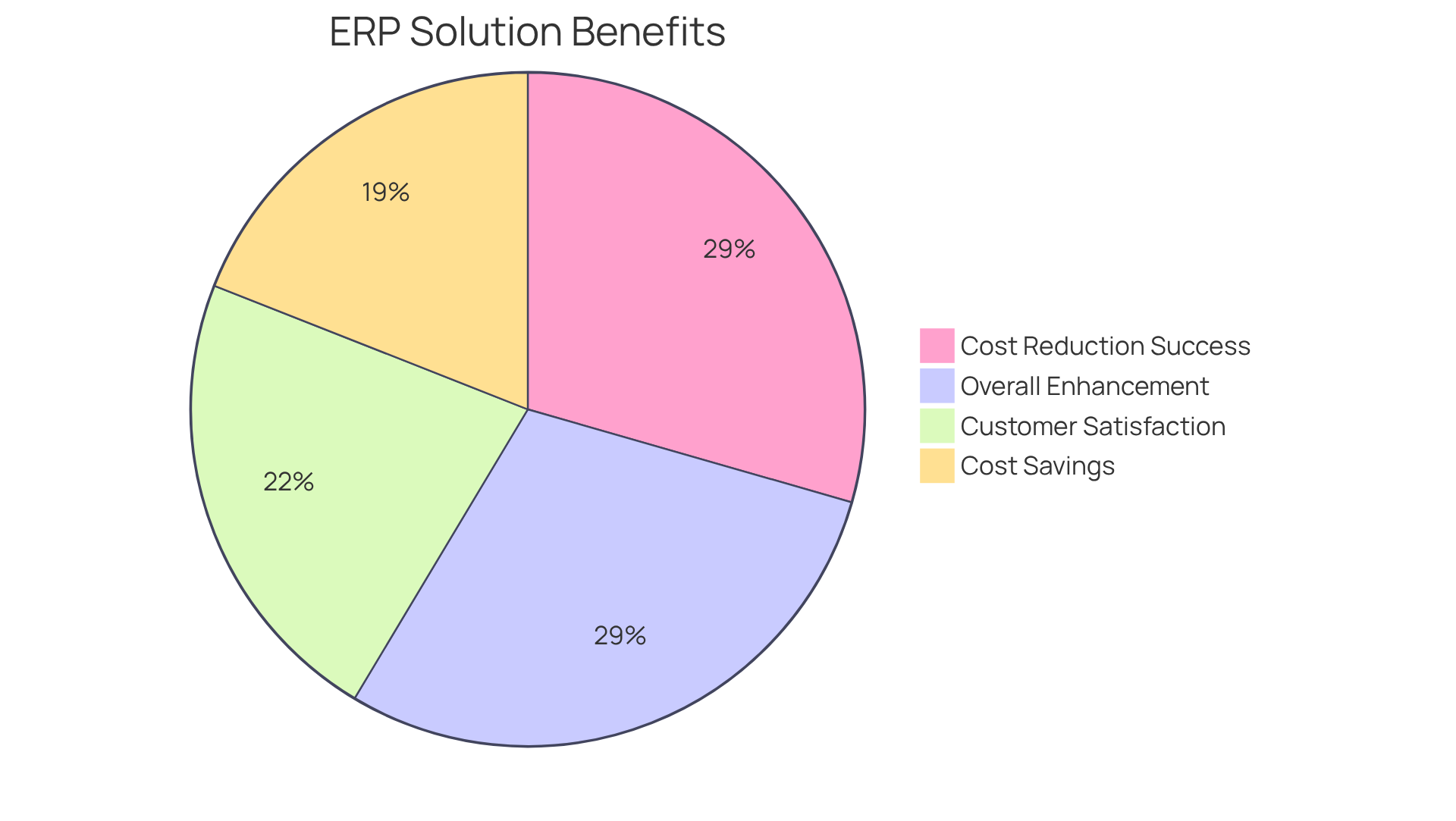
Tipalti: Automate Accounts Payable and Procurement
Tipalti: Automate Accounts Payable and Procurement
You might be wondering how to make your accounts payable process smoother. Well, Tipalti is here to help! As a leading accounts payable automation platform, it significantly enhances procurement standard operating procedures. By automating key tasks like invoice processing, payment approvals, and vendor management, Tipalti helps companies streamline their purchasing workflows. Let’s dive into some of the awesome benefits of using Tipalti:
- Time Savings: Did you know that AP automation can save organizations over 70% of the time spent on accounts payable? That means finance teams can focus on strategic initiatives instead of getting bogged down by repetitive tasks.
- Error Reduction: Nobody likes making mistakes, especially when it comes to finances. Automation cuts down on manual errors, leading to better accuracy in your financial operations.
- Accelerated Payment Cycles: Who doesn’t want quicker payment cycles? With Tipalti, organizations can expect faster payments, which helps strengthen supplier relationships and boosts overall purchasing efficiency.
- Recent Developments: Speaking of improvements, Tipalti has rolled out new features that empower organizations to optimize their purchasing workflows. This keeps them competitive in today’s fast-paced business world.
- Real-World Impact: For instance, BrightView Health ramped up its invoice processing from 3,000 to over 10,000 thanks to AP automation. That’s a real testament to the practical benefits of Tipalti's solutions!
As Petra Martinis puts it, "Automation is now essential for business success, streamlining operations, optimizing decision-making." This really highlights how crucial automation is in modern procurement standard operating procedures for purchasing strategies. So, are you ready to explore how Tipalti can transform your accounts payable process?
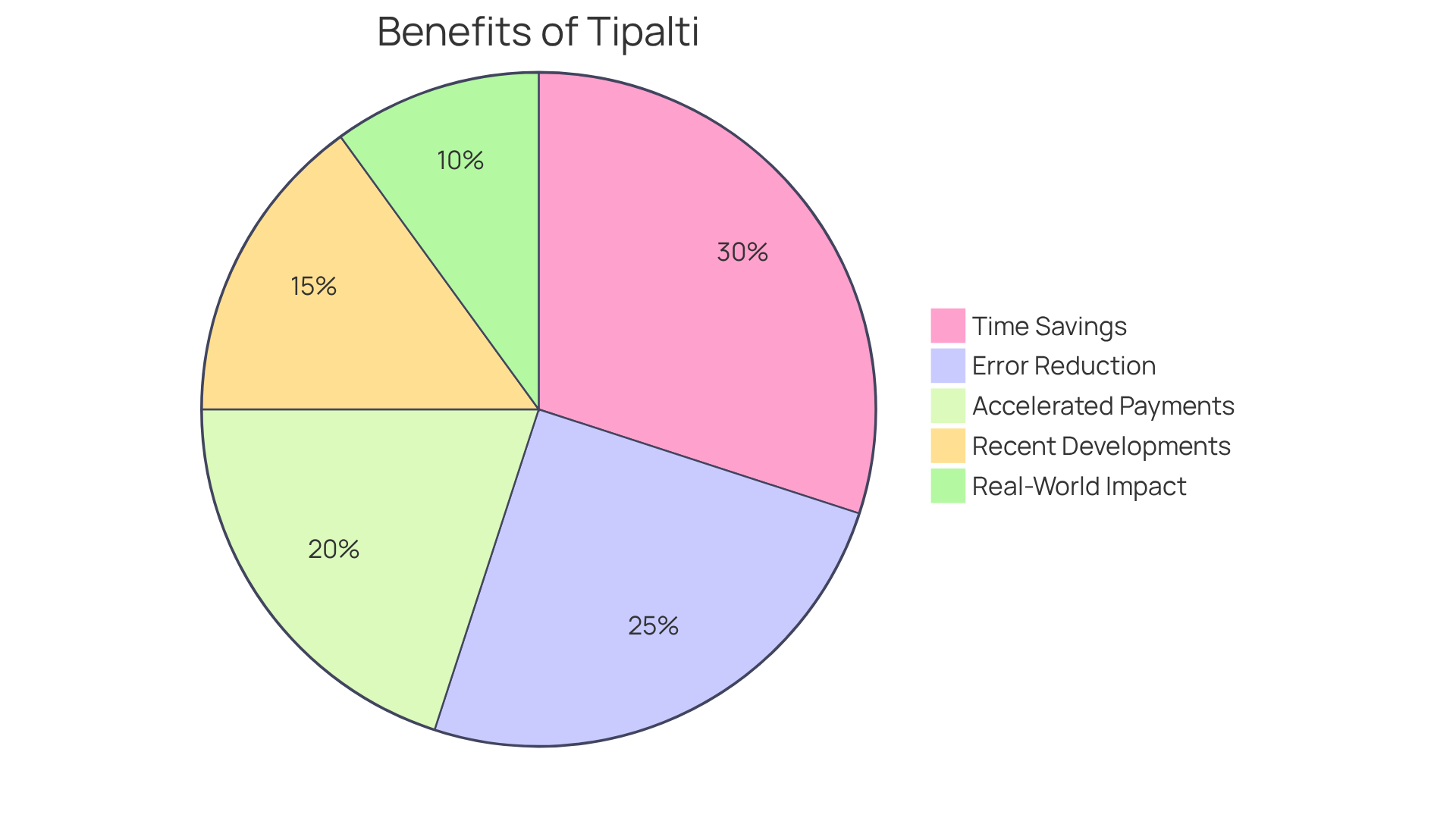
VendorCentric: Best Practices for Procurement Policies and Procedures
You might be wondering why having clear procurement standard operating procedures is so important. Well, VendorCentric emphasizes that they can really boost operational efficiency! Think about it: when roles and responsibilities are clearly defined, and compliance with regulations is ensured, everything runs smoother. Plus, regularly reviewing these policies helps adapt to the ever-changing business landscape.
By embracing these best practices, organizations can create a structured purchasing process that not only reduces risks but also enhances efficiency. This can lead to better supplier relationships and even cost savings! And with AI spending in purchasing projected to skyrocket by 446% by 2025, having immediate access to data is becoming essential for making informed decisions and fostering collaboration across departments.
Now, let’s dive into a pressing issue: 53% of supply chain leaders see rising costs due to inflation as a major hurdle. This makes it even more crucial to ensure that procurement standard operating procedures are clear and straightforward. As Marijn Overvest wisely puts it, 'A good contract protects you. A great one guides you.' By focusing on compliance and transparency, businesses can unlock strategic value and pave the way for sustainable growth.
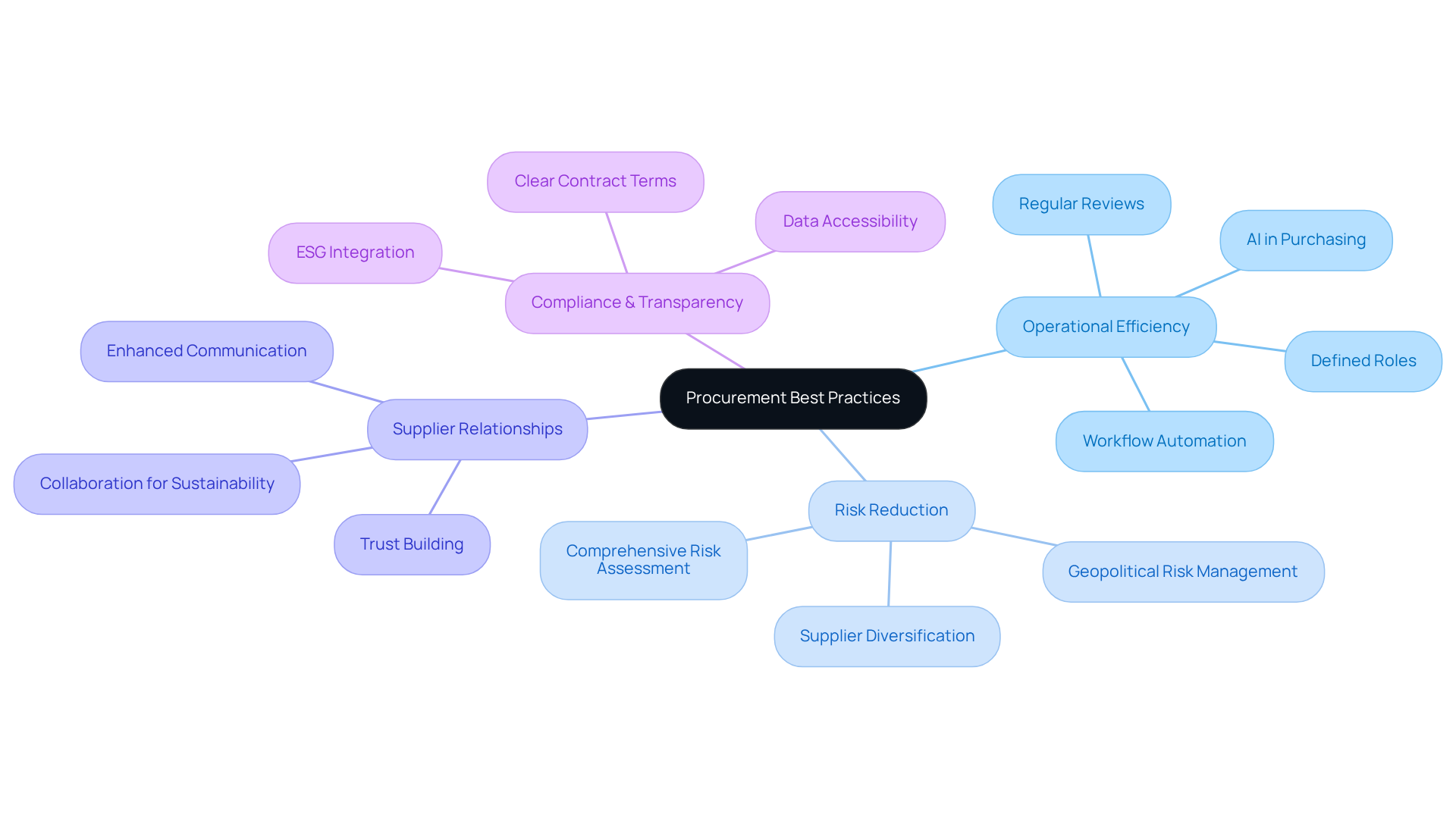
USDA: Government Procurement Procedures and Policies
You might be wondering about the USDA's guidelines for purchasing processes and how they impact public sector contracts. Well, these guidelines are all about ensuring transparency, fairness, and compliance with federal regulations. As EUNA Procure points out, "Transparency is a priority in public or government purchasing since there’s significant potential for corruption and mismanagement of enormous funds derived from taxpayers' money." So, if you're involved in government contracting, it's crucial to get familiar with these procedures to meet all requirements and dodge any potential pitfalls.
Understanding procurement standard operating procedures related to USDA acquisition policies is key for anyone looking to navigate the public sector purchasing landscape effectively. Did you know that public purchasing represents around €2 trillion each year? That’s about 13.6% of the EU’s GDP! It really highlights the scale and impact of these guidelines. Plus, with a growing emphasis on transparency and sustainability in public contracting, following these guidelines not only boosts your credibility but also helps create a more accountable purchasing system.
This commitment to sticking to the rules is clear in how organizations are increasingly using technology to streamline their acquisition methods. It’s all about staying competitive and effective in a fast-paced environment. Speaking of which, 61% of survey participants mentioned they have initiatives for environmental sustainability, vendor diversity, or both. This suggests a shift towards responsible purchasing practices that you might want to consider!
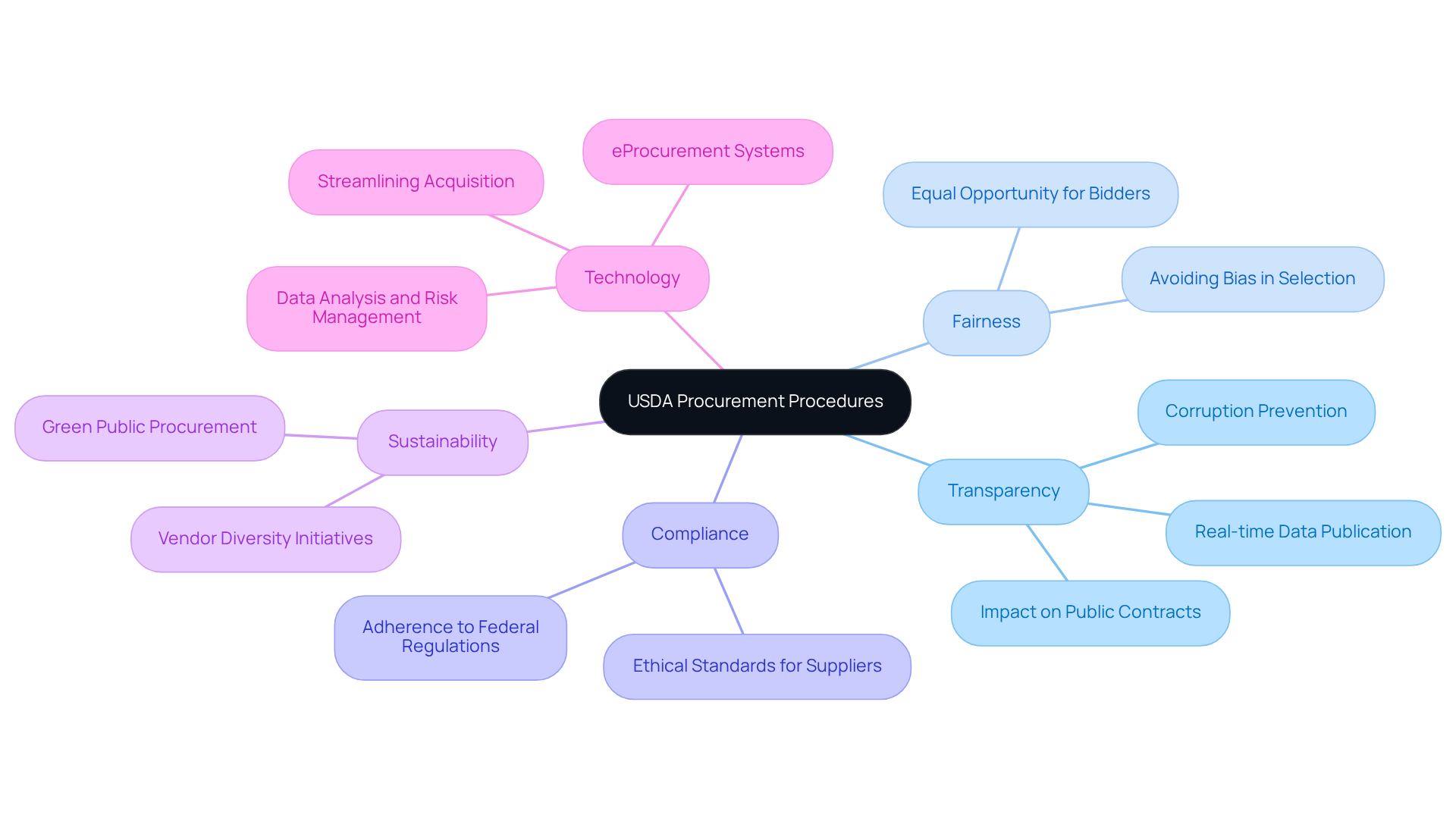
Waybook: Enhance Procurement Processes with SOP Management
You might be wondering how to keep your procurement standard operating procedures in check while acquiring goods. Well, that’s where Waybook comes in! It’s a fantastic resource that centralizes all your activities and documentation, ensuring everything stays consistent and compliant across the board. By making it super easy to create, organize, and monitor SOPs, Waybook helps purchasing teams streamline their workflows and boost overall efficiency.
Now, let’s talk numbers. Did you know that companies embracing centralized documentation often see significant improvements in their purchasing activities? Research shows that:
- 51% of e-procurement platform users experience a remarkable drop in paper usage, which really enhances transparency and compliance.
- 66% of Chief Procurement Officers agree that centralized documentation is key to reducing supply chain risks and keeping operations running smoothly.
For example, businesses using Waybook have reported smoother onboarding processes and less time spent on training. This means teams can focus on strategic initiatives instead of getting bogged down by administrative tasks. As sourcing continues to evolve, tools like Waybook are becoming essential for organizations looking to optimize their operations and stay ahead of the competition. So, why not explore how it can work for you?
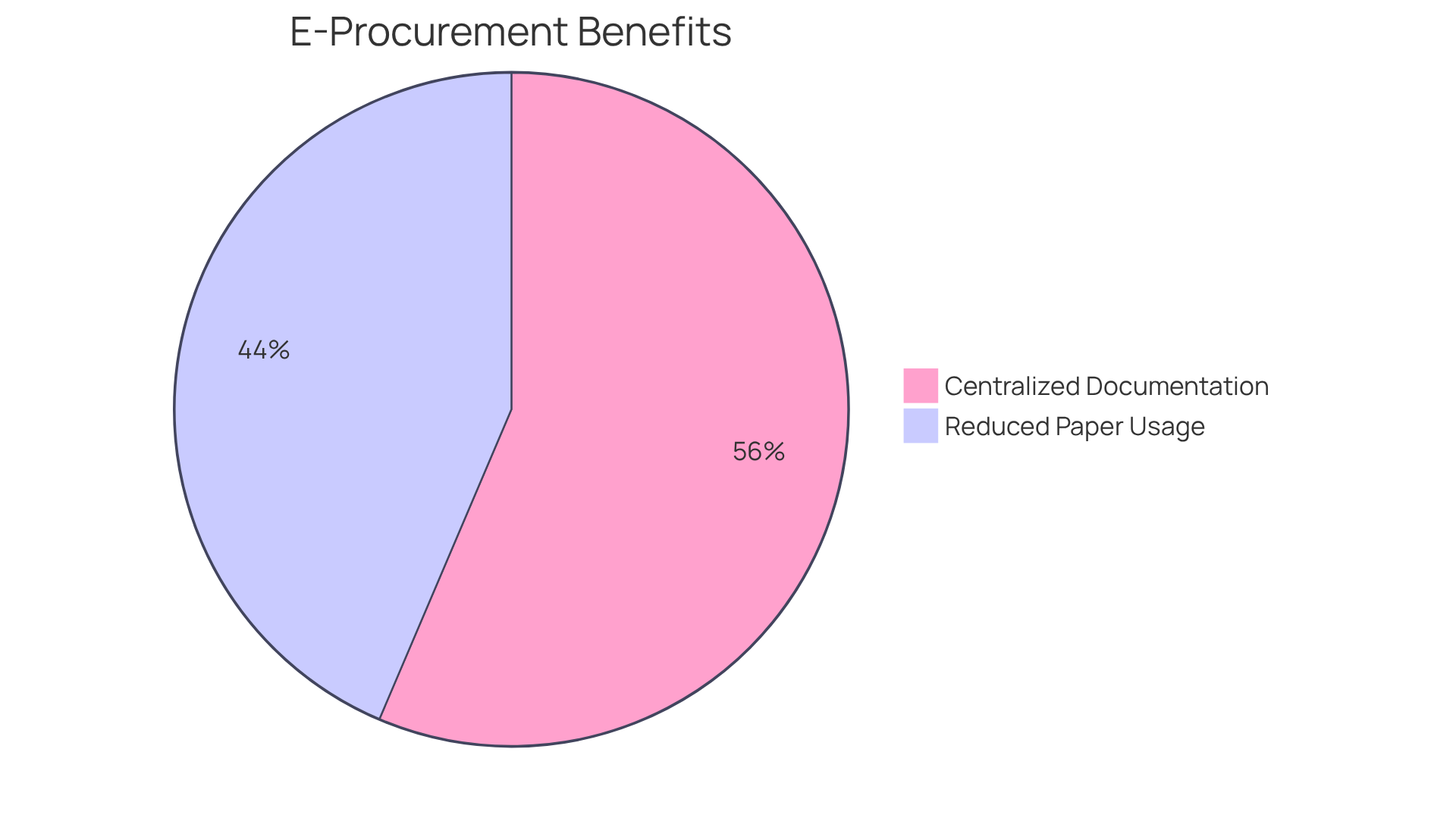
Industry Best Practices: Essential Procurement Strategies
You might be wondering what the best practices in purchasing really look like. Well, they include strategies like:
- Strategic sourcing
- Vendor relationship management
- Spend analysis
It’s all about building strong connections with your vendors, using data to make smart purchasing decisions, and regularly checking in on how your acquisition processes are doing.
By embracing these practices, you can boost your purchasing efficiency, cut down on costs, and really drive your business forward. So, why not take a closer look at how these strategies can work for you? It’s all about making those connections and using the right data to guide your choices!
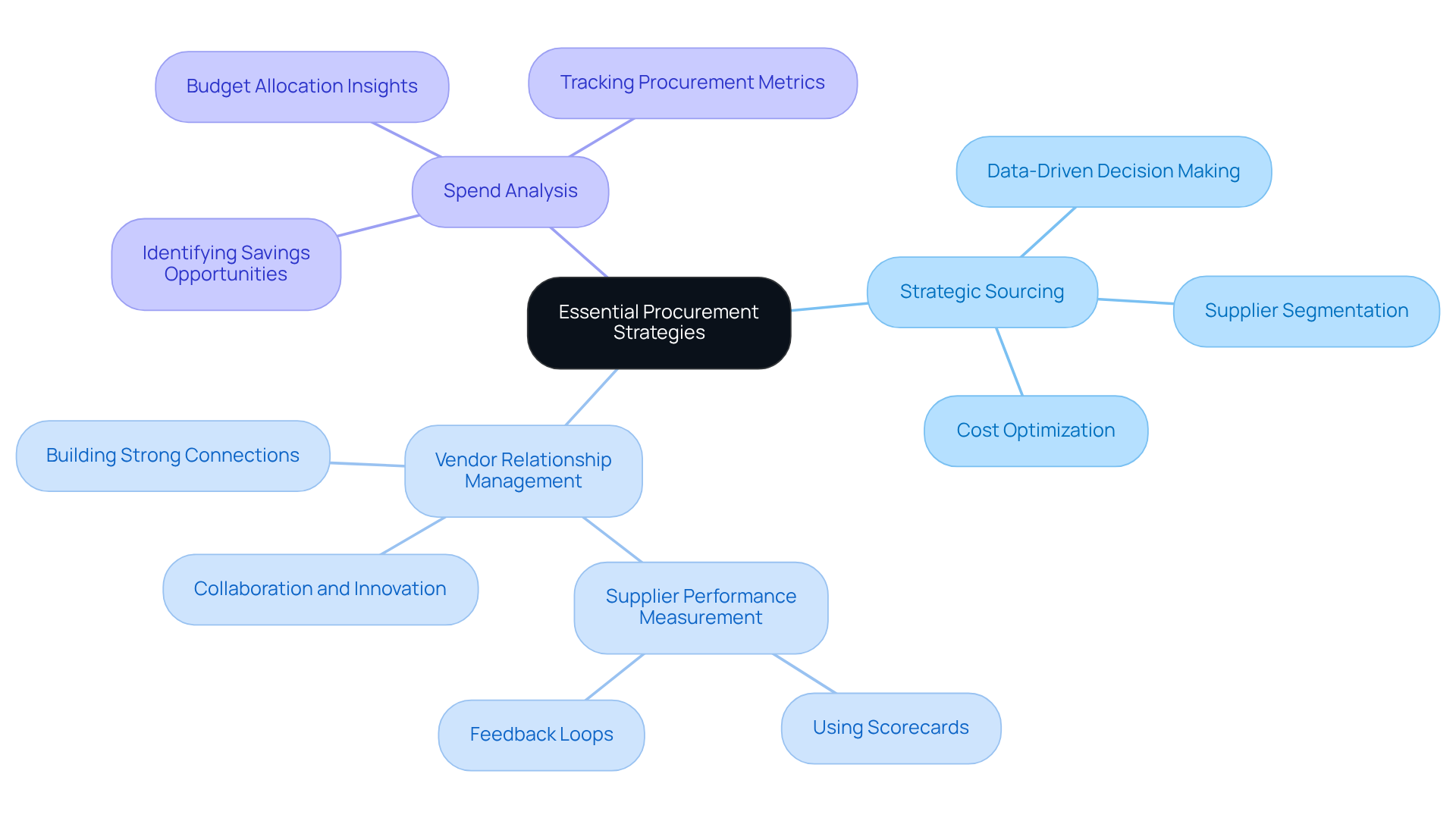
Procurement Lifecycle: Key Stages and Management
You might be wondering about the acquisition lifecycle and what it really involves. Well, it’s made up of several key stages:
- Needs identification
- Supplier evaluation
- Contract negotiation
- Performance management
Each of these stages is super important for ensuring that procurement standard operating procedures are implemented smoothly and effectively. Organizations really need to manage these stages carefully to optimize their procurement standard operating procedures, reduce costs, and ensure compliance with regulations. For example, many organizations have found that effective vendor assessment can lead to a whopping 15% reduction in operational costs, especially when they integrate predictive AI tools. And get this - 87% of companies are now using e-Procurement tools for supplier sourcing, which just shows how crucial technology is in this stage.
Now, let’s talk about contract management. Organizations that prioritize this can really mitigate risks that come with mismanagement. Did you know that this affects about 15% of larger companies? That’s a significant number, and it can lead to some serious financial losses. As George Vrakas points out, "Effective contract management systems are crucial for managing the complexities of acquiring goods and ensuring compliance."
So, how can organizations improve purchasing efficiency? It all starts with adopting a structured method to manage these stages according to procurement standard operating procedures. This means leveraging technology to streamline processes and boost collaboration across departments. A centralized digital contract repository is key here, especially since 71% of companies can’t locate 10% or more of their contracts. That’s a big deal, right?
Speaking of trends, there’s a noticeable shift towards cloud-based solutions, with over 55% of companies fully embracing these tools for their purchasing needs. This transition not only makes data more accessible but also fosters a collaborative environment for contract negotiation and vendor management. As sourcing experts navigate the complexities of today’s globalized markets, understanding and optimizing each stage of the sourcing lifecycle is essential for achieving operational excellence. So, if you’re looking to kick things off, why not consider adopting e-Procurement tools to enhance your vendor evaluation procedures?
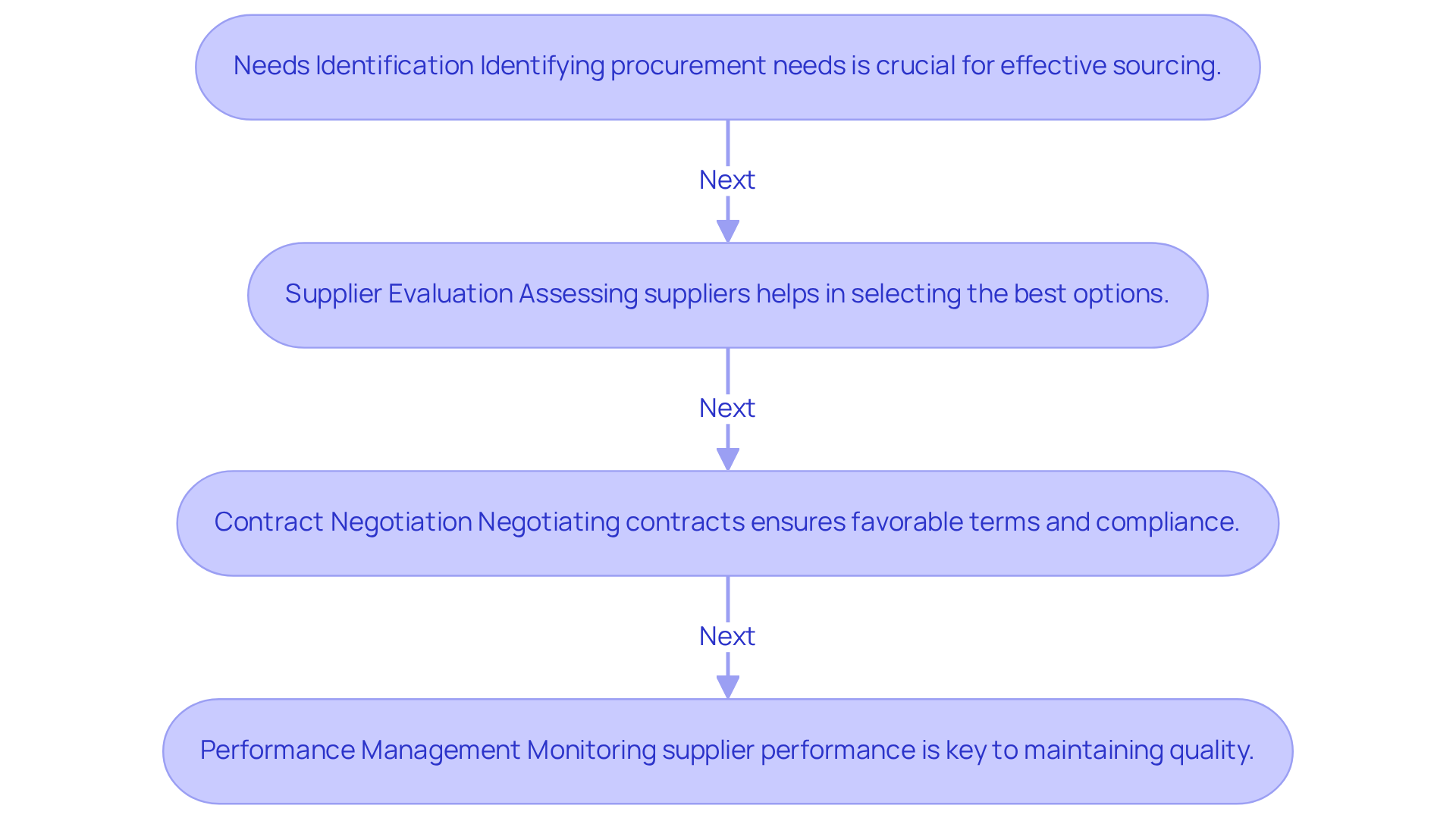
Competitive Bidding: Strategies for Effective Procurement
You might be wondering why competitive bidding is such a big deal in purchasing strategies. Well, it’s all about getting various providers to throw their hats in the ring, which helps organizations snag the best price and quality. To really boost your purchasing results through competitive bidding, it’s super important to clearly define what you need and set up solid evaluation criteria.
Now, let’s talk about transparency. It’s crucial throughout the bidding process because it builds trust and encourages fair competition among suppliers. Think about it: entities that focus on clear communication and do their homework often see better procurement outcomes, like cost savings and higher quality deliverables. Did you know that 69% of organizations are using RFP tools or software? That’s a game changer for managing bids effectively!
And here’s a tip: teams that use structured evaluation frameworks can really nail down supplier proposals, leading to smarter decision-making. As Fareen Mehrzai, a Senior Director Analyst in Gartner’s Supply Chain Practice, puts it, "Transparency in the bidding procedure not only builds trust but also ensures that all participants have equal access to opportunities." So, by putting these strategies into action, you can optimize your procurement standard operating procedures and achieve significantly better outcomes.

Supplier Performance Monitoring: Ensuring Quality in Procurement
You might be wondering why vendor performance monitoring is such a big deal. Well, it’s all about keeping tabs on your providers based on key metrics like quality, delivery, and compliance. To really get a handle on how your vendors are doing, it’s crucial to define clear performance indicators. Think about things like:
- Defect rates
- On-time delivery rates
- Order accuracy
These metrics help you assess how well your providers are meeting expectations.
Regularly checking in on vendor outputs against these indicators is a smart move. For instance, if you see a defect rate under 1%, that’s a sign of solid quality assurance. But if that number jumps to 15% or higher, it’s time to dig deeper and address any systemic issues. And let’s not forget about on-time delivery rates - they’re key to keeping your operations running smoothly.
Now, speaking of keeping things running, adopting a systematic approach to oversight through procurement standard operating procedures can really help maintain high-quality standards in your purchasing processes. This not only boosts your operations but also helps build strong relationships with your vendors. Plus, current trends show that incorporating AI and predictive analytics into vendor assessments is becoming more common. This tech can really enhance your ability to monitor performance and adapt to market changes.
As purchasing teams lean more on data-driven strategies, the importance of quality metrics in vendor assessment can’t be overstated. These metrics are the backbone of informed decision-making and ongoing improvement. So, why not take a closer look at how you can enhance your vendor performance monitoring?
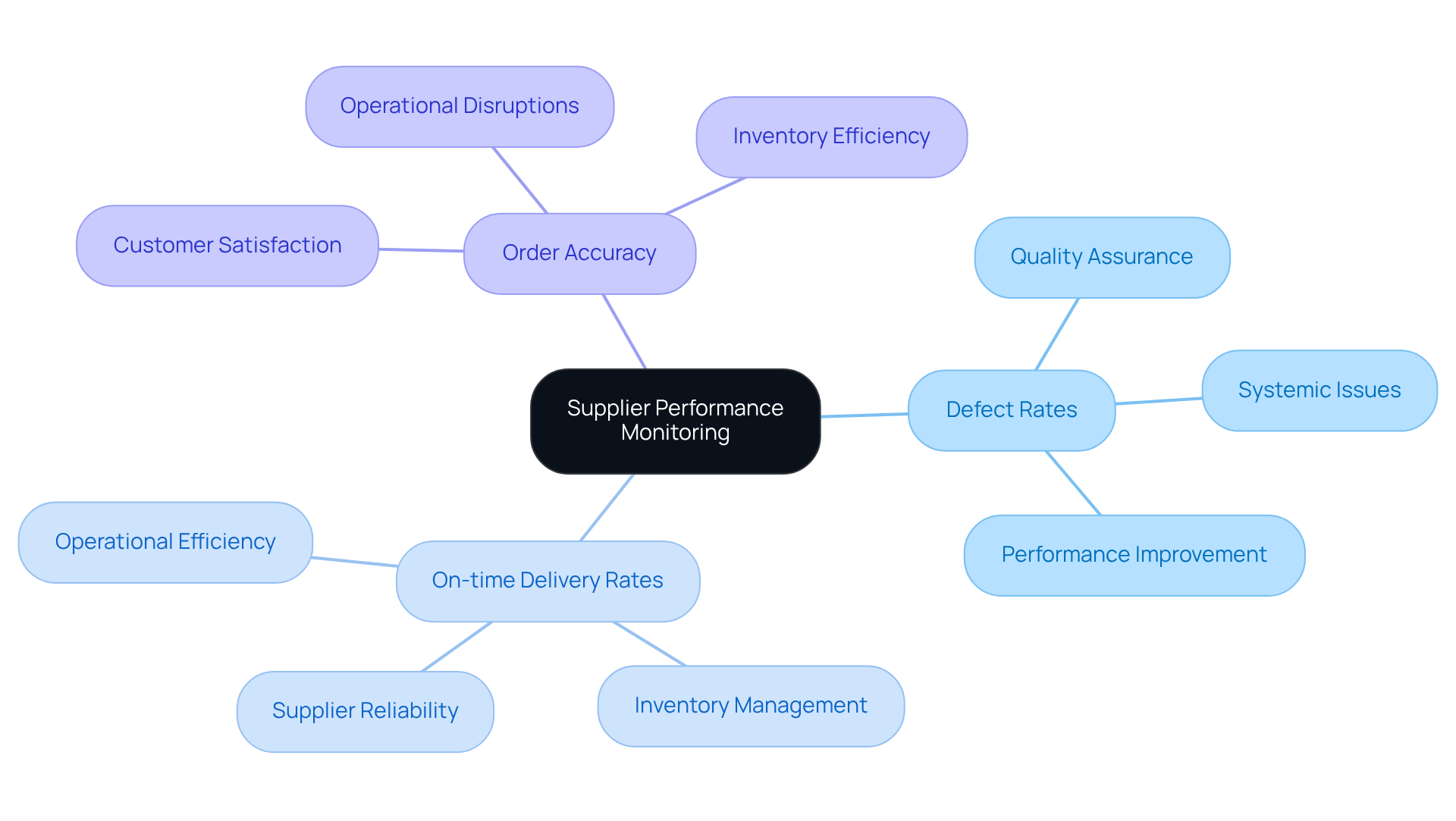
Spend Analysis: Identifying Cost Reduction Opportunities
You might be wondering what spend analysis really is. Well, it’s all about systematically collecting and examining purchasing data to spot spending patterns and find opportunities for cost savings. By regularly diving into spend analysis, organizations can pinpoint inefficiencies, negotiate better terms with suppliers, and make smarter purchasing decisions. This practice is crucial for boosting purchasing strategies, often leading to significant cost savings. For example, a global manufacturing company managed to snag an impressive 12% savings in indirect spend just by consolidating vendors. That’s a clear win from effective spend analysis!
Now, let’s talk about current trends in sourcing data analysis. There’s a big push for real-time visibility and automated anomaly detection to ensure data accuracy. High-performing organizations are focusing on spend analysis types that align with specific business outcomes, turning data into actionable insights. As purchasing teams lean more on data-driven decision-making, integrating advanced analytics tools becomes a must. Industry specialists even say, 'Spend analysis enables you to make more informed decisions regarding your vendors.' This really highlights how important it is to incorporate data into procurement standard operating procedures.
But wait, there’s more! Companies that actively engage in spend analysis can significantly cut down on maverick spending by identifying non-compliant purchasing behaviors. Did you know that companies can lose 10-20% of their targeted savings due to maverick buying? That’s a hefty financial hit! Not only does effective spend analysis boost compliance, but it also helps build stronger supplier relationships, leading to better financial and operational performance overall. By focusing on the right spend analysis categories, organizations can bridge the gap between finance and purchasing, creating integrated operations that deliver major benefits across the board.

Clear Procurement Policies: Foundation for Effective Operations
You might be wondering why setting clear purchasing policies is so important. Well, for any organization looking to stick to regulations and boost efficiency, it’s absolutely crucial! These procurement standard operating procedures should outline everything from how to make purchases to selecting suppliers and managing contracts. When organizations have solid procurement standard operating procedures in place, they can significantly reduce risks, enhance accountability, and streamline their acquisition processes.
Speaking of which, did you know that a study found 72% of senior purchasing leaders are ramping up their Environmental, Social, and Governance (ESG) efforts? That’s a clear sign of a growing commitment to responsible sourcing practices! Plus, 55% of compliance and risk experts say that regulatory adherence is their top concern, which really highlights how essential compliance is in purchasing policies.
Now, let’s dive into the benefits. Organizations that focus on procurement standard operating procedures often find their decision-making improves. In fact, 57% of businesses report getting better insights thanks to risk management technologies. This structured approach not only leads to better outcomes but also helps organizations navigate the tricky waters of modern supply chains.
And here’s something to think about: 81% of entities are either currently pursuing or planning for ISO 27001 certification by 2025. That’s a big commitment to compliance and operational efficiency through established standards! So, if you’re looking to enhance your purchasing policies, consider how these insights can guide you toward better practices.
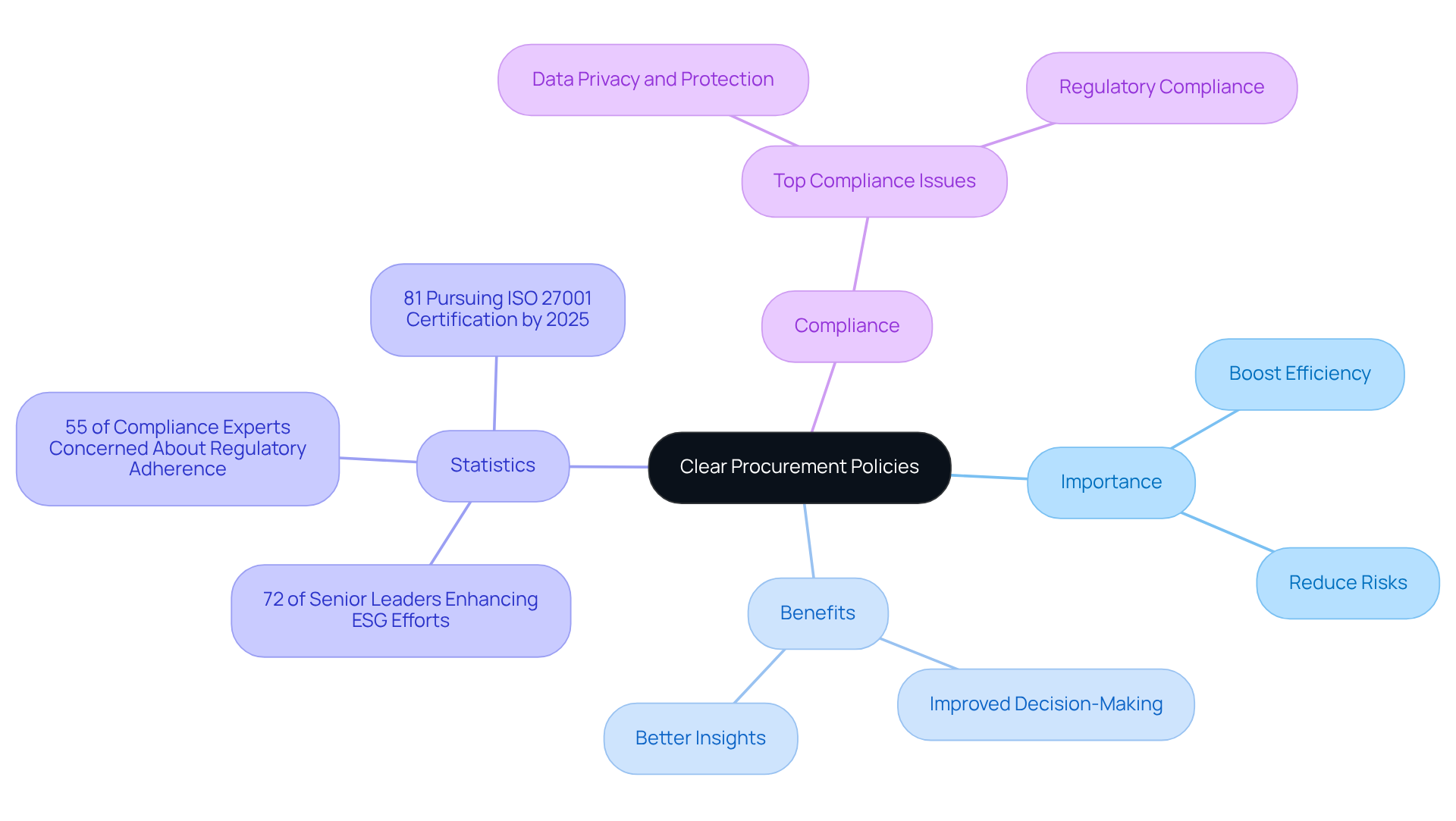
Continuous Improvement: Enhancing Procurement Efficiency
You might be wondering how to keep improving your purchasing processes, right? Well, ongoing enhancement in purchasing is all about regularly checking in on how you acquire goods and services. It’s like giving your procurement a little tune-up to make sure everything runs smoothly and efficiently.
Organizations can really benefit from using methods like Lean or Six Sigma. These approaches help pinpoint where things could be better and guide you in making changes that lead to awesome results. By creating a culture of continuous improvement, you can easily adapt to whatever the market throws your way, cut down on costs, and improve your procurement standard operating procedures.
So, why not take a moment to think about how these strategies could work for you? It’s all about making your processes more effective and keeping up with the times!
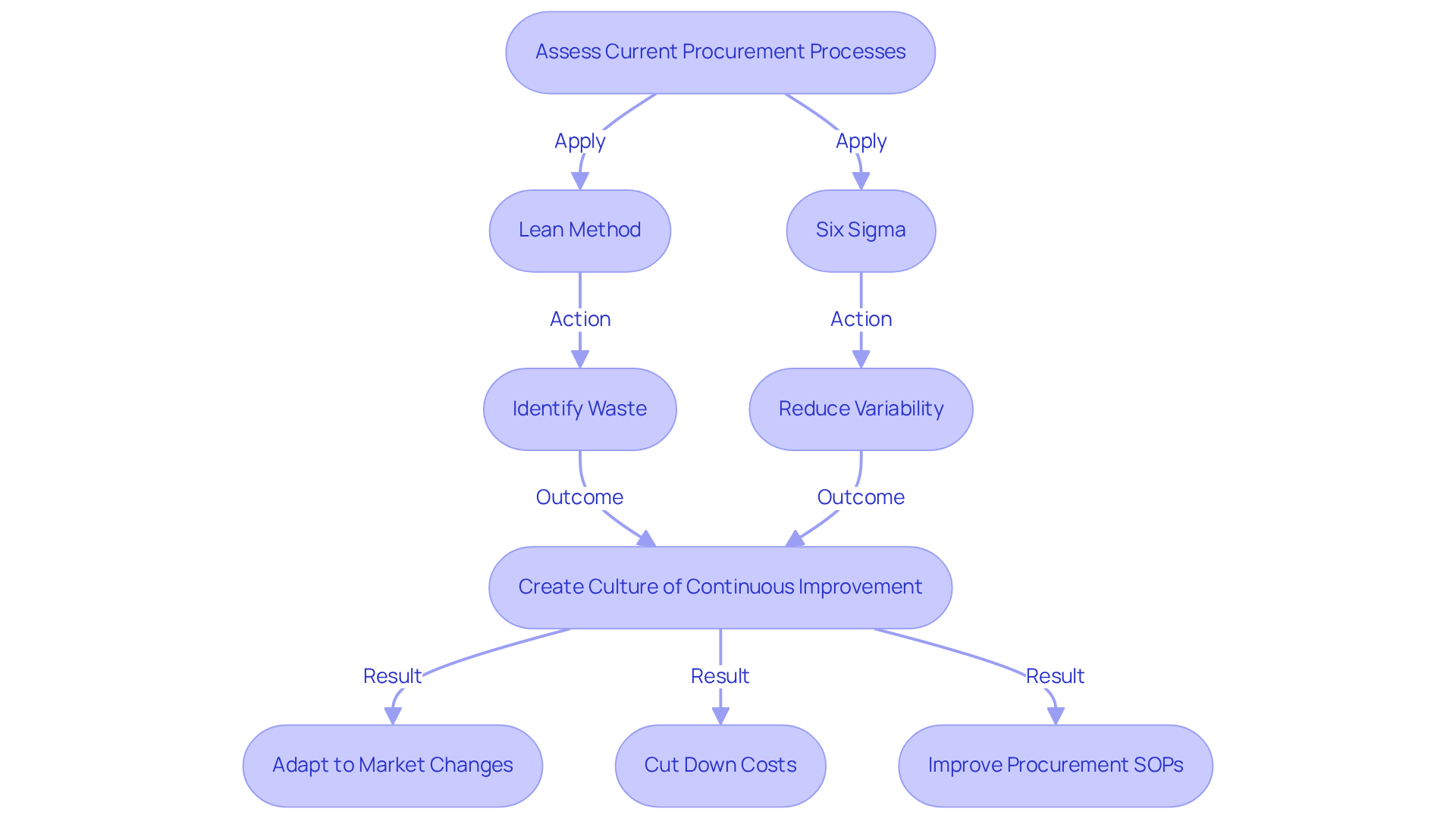
Conclusion
In the world of procurement, you might be wondering why establishing effective standard operating procedures (SOPs) is so crucial for success. Well, it’s all about leveraging technology and best practices to boost efficiency, compliance, and decision-making in purchasing processes. By embracing modern solutions, businesses can streamline operations, cut down on errors, and ultimately achieve better outcomes.
Throughout this article, we’ve explored some essential tools like SowFlow, Bill.com, Kissflow, and NetSuite. Each of these platforms brings something unique to the table, catering to different aspects of procurement management. From creating SOPs in a snap to offering comprehensive ERP solutions, these tools empower organizations to optimize their procurement processes and adapt to the ever-changing market landscape. Plus, let’s not forget the importance of clear procurement policies and a commitment to continuous improvement - staying proactive is key!
As the procurement landscape keeps evolving, embracing tech advancements and sticking to best practices will be vital for organizations looking to stay ahead of the game. Investing in solid procurement tools not only boosts operational efficiency but also strengthens supplier relationships and promotes sustainable practices. So, why not take a moment to evaluate your procurement strategies? These insights could lead to some game-changing improvements in your purchasing operations!
Frequently Asked Questions
What is SowFlow and how does it improve procurement processes?
SowFlow is an intuitive platform that allows organizations to create procurement standard operating procedures (SOPs) quickly. It enables teams to document workflows directly from their browser, which saves time, boosts compliance, and reduces errors in procurement.
What are the benefits of using technology for documentation in procurement?
Integrating technology into documentation enhances operational efficiency and improves decision-making. Research shows that 57% of purchasing professionals have experienced better decision-making skills due to insights from advanced documentation tools.
What is the current trend in supply chain technology investment?
A significant 74% of global supply chain leaders are increasing their investments in supply chain technology, indicating a growing demand for modern solutions like SowFlow.
How does Bill.com enhance procurement and financial operations?
Bill.com offers features like automated invoice processing, streamlined approval workflows, and real-time spending visibility, which help organizations improve their procurement SOPs and minimize manual errors.
What is the return on investment (ROI) for companies using document processing automation?
Companies that implement document processing automation often see an average ROI of 200-300% within the first year.
Can you provide an example of Bill.com’s effectiveness?
A client in the hotel and gaming industry saved over 40% by automating their procurement SOPs with Bill.com, showcasing its practical impact.
What is Kissflow and how does it optimize procurement processes?
Kissflow is an automation platform designed to enhance purchasing workflows through features like automated purchase requisitions and vendor management, which can cut processing times by up to 50%.
How does automation in procurement affect decision-making?
Reports indicate that 55% of companies experience faster decision-making as a direct benefit of automated document workflows.
What advantages does NetSuite offer for procurement management?
NetSuite provides a comprehensive ERP solution that integrates purchasing management with finance, inventory, and order management, improving visibility, control, and compliance with procurement SOPs.
What are the cost-saving benefits associated with using ERP systems?
Organizations using integrated ERP systems have reported cost reductions of up to 30% in purchasing and inventory management, with 62% of companies seeing significant cost savings due to automation.
👍
What others are liking
5 Steps to outline your ideal documentation structure
5 MINS READ
Where to start the your journey of mapping out your ideal documentation structure, aligning it with the very heartbeat of your organization?
Defining a winning level of detail in your process
3 MINS READ
What is too much detail, and what is too little? This article described in that winning level detail about what detail is enough.





